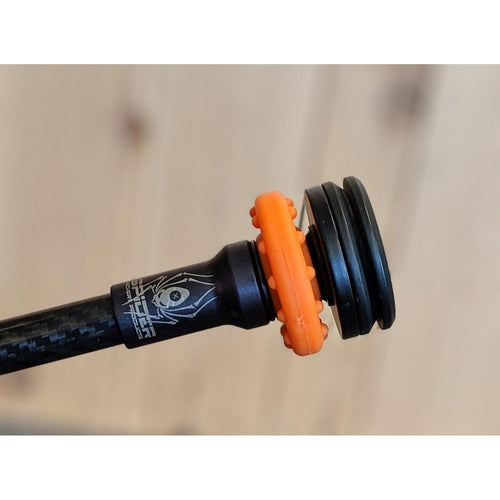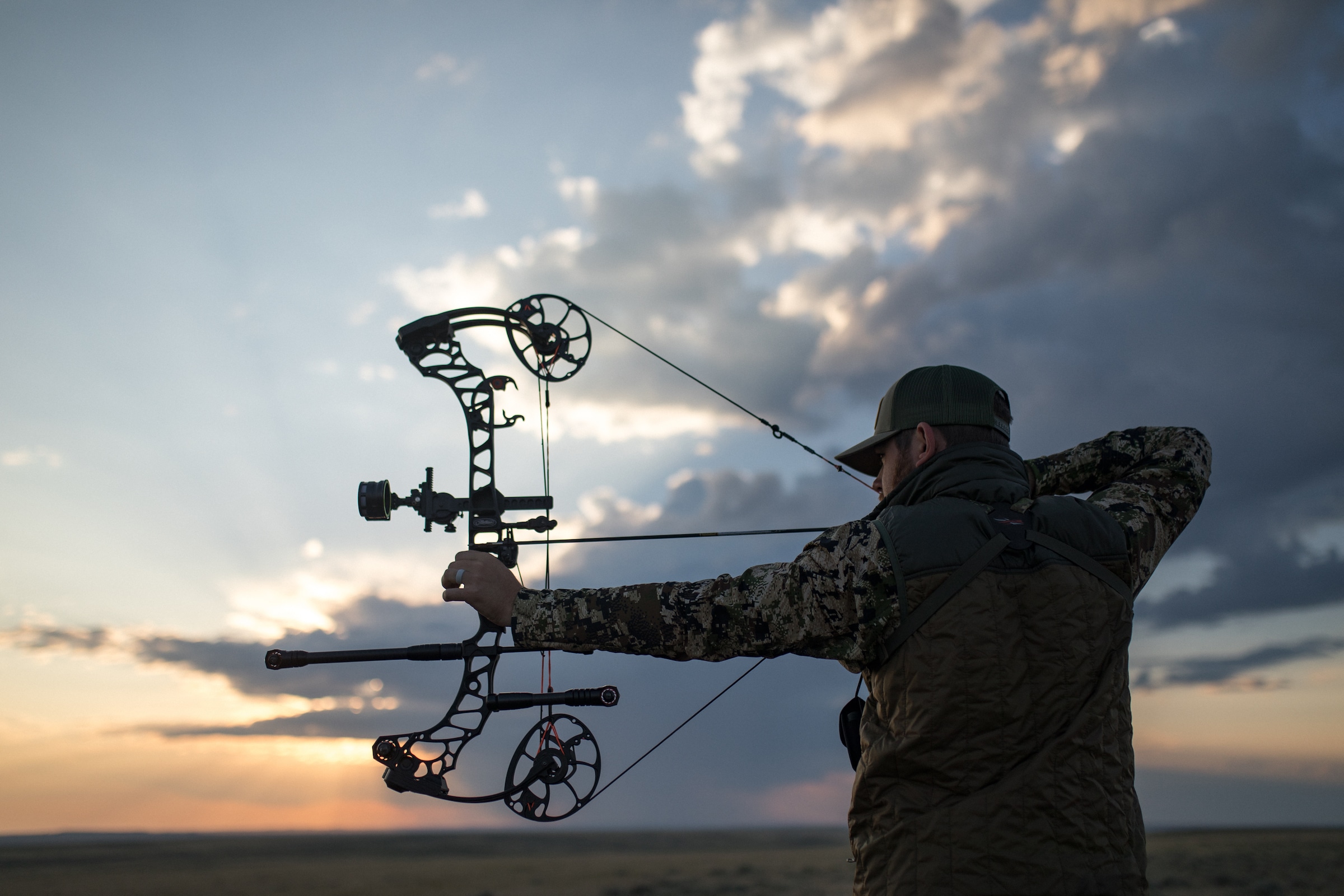Opening Precision: The Advantages of Using Archery Stabilizers
Opening Precision: The Advantages of Using Archery Stabilizers
Blog Article
The Ultimate Guide to Picking the Right Archery Stabilizer for Boosted Accuracy
Amongst the different accessories available, an archery stabilizer plays a significant function in enhancing accuracy. In this comprehensive overview, we will certainly explore the crucial variables to think about when selecting an archery stabilizer for boosted precision. Whether you are a seasoned archer looking to upgrade your devices or a beginner looking for advice, join us on this journey as we unravel the tricks to choosing the best archery stabilizer.
Length: Discovering the Optimum Stabilizer Length
Determining the optimal stabilizer length is important when choosing an archery stabilizer for optimum performance. A stabilizer that is as well long can make the bow feel challenging and top-heavy to manage, while a stabilizer that is as well short might not offer adequate security and dampening of resonances.
A longer stabilizer, usually varying from 8 to 12 inches, can provide greater stability and reduce bow torque. This is specifically valuable for archers who shoot with a high draw weight or those who tend to torque the bow throughout the shot. The added size helps to distribute the weight equally and counterbalance any torque or motion.
On the other hand, a much shorter stabilizer, generally in between 4 to 7 inches, uses more maneuverability and quicker feedback. It is preferred by archers that shoot with a lower draw weight or those that need even more flexibility, such as hunters or 3D shooters. The much shorter length enables for much easier movement via limited rooms and faster changes.
Eventually, the optimum stabilizer size is a matter of individual preference and shooting design. It is suggested to experiment with various sizes and observe the results on security and precision. Consulting with seasoned archers or specialists can also supply valuable insights and suggestions.
Weight: Figuring Out the Appropriate Stabilizer Weight
After taking into consideration the optimal stabilizer length, the next vital factor to take into consideration when picking an archery stabilizer is identifying the appropriate stabilizer weight - archery stabilizer. The weight of the stabilizer plays a vital duty in improving precision and security throughout the shot
The weight of the stabilizer impacts the equilibrium and control of the bow. A heavier stabilizer can give increased security and control, particularly for shooters with a propensity for unsteady hands or inconsistent shots. It helps to absorb the vibrations and recoil produced by the bow, reducing torque and reducing the result on the arrowhead's trip.
On the various other hand, a lighter stabilizer allows for a quicker and a lot more receptive bow. It can be advantageous for shooters that prioritize maneuverability and rate over security. Lighter stabilizers likewise decrease tiredness during long shooting sessions or competitors.
To establish the ideal stabilizer weight for your needs, it is essential to consider your shooting design, physical toughness, and bow arrangement. Trying out different weights and observing the influence on your shooting efficiency is crucial to locating the best balance.
Inevitably, the optimal stabilizer weight will vary for every private archer. It is advised to begin with a moderate weight and make adjustments based on individual preference and shooting results. Remember, the goal is to achieve a controlled and secure shot, while additionally preserving comfort and simplicity of usage.
Products: Selecting the Right Materials for Sturdiness and Performance
When picking an archery stabilizer, it is critical to carefully consider the products utilized in Web Site its construction to make sure resilience and enhance efficiency. The choice of products can substantially impact the general quality and performance of the stabilizer.
One of the most generally made use of products for stabilizers is carbon fiber. In addition, carbon fiber stabilizers are immune to temperature modifications and are less likely to warp or bend over time.
One more preferred product for stabilizers is aluminum. Aluminum stabilizers additionally offer a large array of modification alternatives, allowing archers to change the weight and size to fit their preferences.
Some stabilizers are built using a combination of materials. For instance, a stabilizer might have a carbon fiber core covered in a light weight aluminum covering. This crossbreed design integrates the most effective high qualities of both materials, providing optimum security, durability, and efficiency.
Style: Comprehending the Various Stabilizer Layouts and Their Impacts
Taking right into account the materials utilized in archery stabilizers, it is crucial to now explore the different designs of stabilizers and their respective results. The layout of an archery stabilizer plays an important duty in enhancing accuracy and decreasing vibration throughout the shot. There have a peek at this website are a number of different designs available out there, each with its own special attributes.

Another preferred layout is the side bar stabilizer. This layout includes connecting a brief rod to the side of the bow, alongside the main lengthy rod. Side bar stabilizers aid in counterbalancing the weight of accessories, such as quivers or views, and offer added security to the bow.
Some stabilizers feature flexible weights. These stabilizers enable archers to adjust the equilibrium and feel of their bows by adding or removing weights. This function is especially beneficial for archers that favor a specific weight distribution or desire to experiment with different configurations.
In addition, some stabilizers integrate moistening modern technology to decrease resonance and sound. These stabilizers often have built-in dampeners or utilize products that take in vibrations, resulting in a smoother and quieter shot.

Accessories: Discovering Extra Accessories for Boosted Security
These accessories are created to function in combination with the archery stabilizer to supply an even greater level of stability and precision. One such accessory is the V-bar or the side stabilizer mount.
Another accessory that can enhance stability is a bow sling. A bow sling is a band that connects to the bow and allows the archer to maintain a relaxed grip on the bow manage without the fear of dropping it (archery stabilizer). This loosened up hold assists to lower muscle mass stress and permits a much more secure and constant shot
In addition, a stabilizer weight system can be used to tweak the equilibrium and security of the bow. These weight systems normally are composed of tiny weights that can be added or eliminated from the stabilizer to adjust the equilibrium factor of the browse this site bow. By discovering the optimum balance factor, archers can accomplish a more secure and precise shot.
Conclusion
To conclude, selecting the best archery stabilizer includes taking into consideration factors such as size, weight, products, design, and extra devices. The optimum stabilizer size and weight will rely on specific choices and shooting design. Picking long lasting materials is important for resilient performance. Understanding the various stabilizer styles will help enhance accuracy. Checking out extra accessories can even more improve security throughout archery capturing.
Establishing the suitable stabilizer length is essential when choosing an archery stabilizer for ideal performance. A stabilizer that is too long can make the bow feel hard and top-heavy to control, while a stabilizer that is too brief might not provide adequate security and dampening of resonances - archery stabilizer.Taking right into account the materials used in archery stabilizers, it is vital to currently dig into the different layouts of stabilizers and their respective effects. Side bar stabilizers aid in reversing the weight of devices, such as quivers or views, and give extra stability to the bow
These weight systems normally consist of tiny weights that can be added or gotten rid of from the stabilizer to change the balance factor of the bow.
Report this page